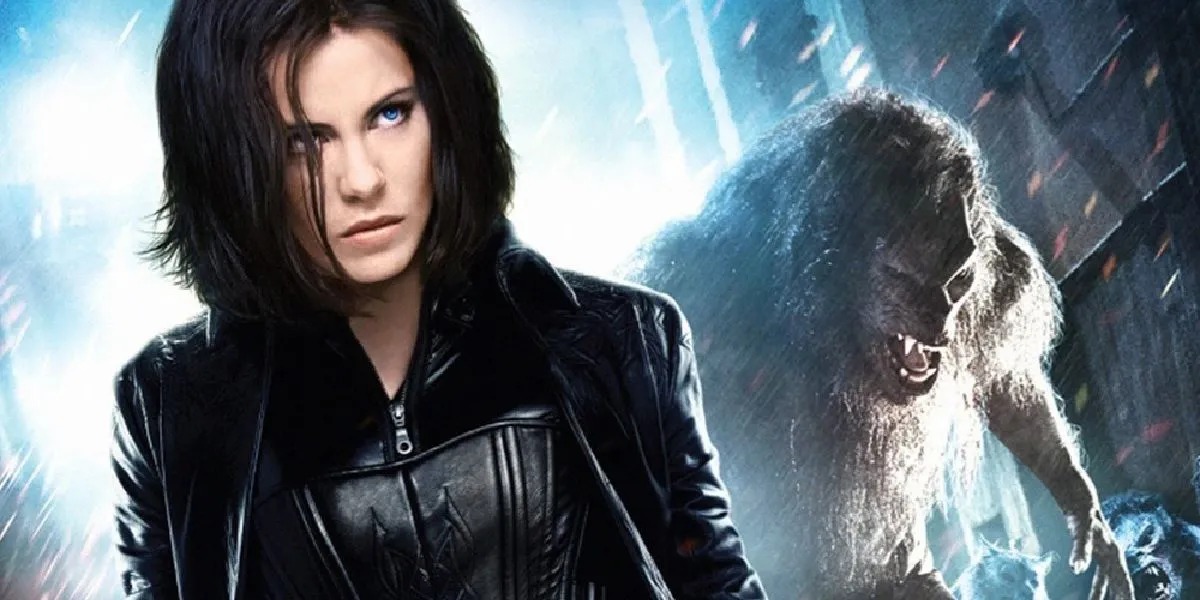Series Underworld (2003-2016)

The “Underworld” series, spanning from its inception in 2003 to its latest installment in 2016, has carved out a niche in the realm of supernatural action-horror films. Directed by various filmmakers including Len Wiseman and Anna Foerster, the franchise delves deep into a world where ancient rivalries between vampires and lycans (werewolves) unfold amidst a backdrop of Gothic landscapes and modern urban settings. With its rich mythology, compelling characters, and visceral action sequences, “Underworld” has captivated audiences and become a definitive entry in the genre.
The series begins with “Underworld” (2003), which introduces viewers to Selene (played by Kate Beckinsale), a vampire Death Dealer tasked with hunting down lycans. The film explores the clandestine war between the two species, revealing intricate hierarchies, blood feuds, and the existence of a hybrid named Michael (Scott Speedman), who becomes pivotal to the unfolding conflict. Central to the narrative is Selene’s journey of discovery and defiance as she navigates betrayal within her own ranks while uncovering long-buried secrets that threaten both vampire and lycan alike.

Building upon the success of the original film, “Underworld: Evolution” (2006) delves deeper into the origins of the vampire and lycan bloodlines, tracing back millennia to uncover the roots of their animosity. Directed by Len Wiseman, the sequel expands the scope of the series by exploring Selene’s bond with Michael and their quest to unravel the mysteries of their intertwined destinies. The film intensifies the action sequences while delving into themes of redemption and the consequences of immortality, setting the stage for further exploration of the series’ mythos.
“Underworld: Rise of the Lycans” (2009) serves as a prequel to the events of the first film, offering insights into the origins of the vampire-lycan conflict. Directed by Patrick Tatopoulos, the film explores the forbidden love between Lucian (Michael Sheen), the first lycan, and Sonja (Rhona Mitra), a vampire noblewoman. Their tragic romance becomes a catalyst for rebellion against the oppressive vampire hierarchy led by Viktor (Bill Nighy), shedding light on the pivotal events that shaped the future of both species.

In “Underworld: Awakening” (2012), directed by Måns Mårlind and Björn Stein, the series takes a bold leap forward, placing Selene in a dystopian future where vampires and lycans are hunted to near extinction by humans. Awakening from cryogenic suspension, Selene discovers she has a daughter, Eve (India Eisley), who possesses unprecedented powers that could change the balance of power in the supernatural world. The film explores themes of maternal instinct, survival, and the relentless pursuit of justice amidst a world on the brink of annihilation.
The series culminates with “Underworld: Blood Wars” (2016), directed by Anna Foerster, which continues Selene’s quest for survival and redemption. Faced with betrayal from within vampire ranks and a new lycan threat led by the ruthless Marius (Tobias Menzies), Selene allies with David (Theo James) and his faction to wage a final, epic battle for supremacy. The film amplifies the stakes with high-octane action sequences, intricate political machinations, and revelations that redefine the destinies of key characters, bringing the saga full circle while leaving room for future exploration.

At its core, the “Underworld” series is renowned for its atmospheric visuals, blending Gothic aesthetics with contemporary urban settings to create a dark and immersive world. The cinematography by various directors including Tony Pierce-Roberts and Karl Walter Lindenlaub enhances the series’ brooding atmosphere, showcasing elaborate costumes, intricate set designs, and dynamic action choreography that bring the supernatural conflicts to life.
Thematically, “Underworld” explores timeless motifs of identity, loyalty, and the price of immortality. Characters such as Selene and Michael grapple with their dual nature and the consequences of their choices, forging alliances and confronting adversaries while navigating the complexities of their own existence. The series challenges conventional notions of heroism and villainy, presenting morally ambiguous protagonists whose actions blur the lines between good and evil.

In conclusion, the “Underworld” series (2003-2016) stands as a testament to the enduring appeal of supernatural mythology and visceral action in cinema. Through its expansive world-building, complex characters, and pulse-pounding action sequences, the franchise has left an indelible mark on the genre, captivating audiences with its blend of Gothic romance, epic battles, and profound exploration of the human condition amidst the supernatural. As a definitive entry in the realm of modern action-horror, “Underworld” continues to resonate with viewers as a dark and mythical saga of vampires, lycans, and the timeless conflicts that define their existence.










